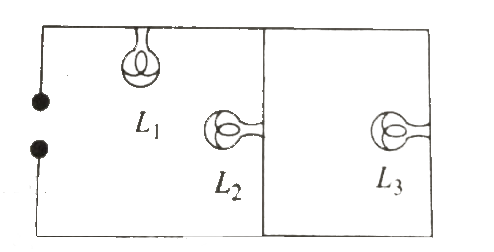Figure 7.44 shows three similar lamps L1,L2,andL3 connectged across a power supply. If the lamp L3 fuses, how will the light emitted by L1andL2 change?

no change
brillance of L1 decreases and that of L2 increases
brilliance of both L1andL2 increases
brillance of both L1andL2 decreases
The correct Answer is:B
Let R be the resistance of each lamp. If E is the applied emf, then the current in the circuit I1 is given by
ER+(R/2)=2E/3R
Current fllowing through L2orL3 is
12[2E3R]=E3R
When L3 is fused , the whole current flows through L1andL2. Thus I2=E/2R. So current through L1 decreases and the current through L2 increases.
Topper's Solved these Questions
- HEATING EFFECT OF CURRENTBOOK - CENGAGE PHYSICSCHAPTER - HEATING EFFECT OF CURRENTEXERCISE - Multiple Correct
5 Videos
- HEATING EFFECT OF CURRENTBOOK - CENGAGE PHYSICSCHAPTER - HEATING EFFECT OF CURRENTEXERCISE - Assertion - Reasoning
6 Videos
- HEATING EFFECT OF CURRENTBOOK - CENGAGE PHYSICSCHAPTER - HEATING EFFECT OF CURRENTEXERCISE - Subjective
8 Videos
- GRAVITATIONBOOK - CENGAGE PHYSICSCHAPTER - GRAVITATIONEXERCISE - Question Bank
39 Videos
- INDUCTANCEBOOK - CENGAGE PHYSICSCHAPTER - INDUCTANCEEXERCISE - Concept Based
9 Videos
Similar Questions
Knowledge Check
In the circuit shown in the figure, if both the lamps L1 and L2 are identical
 ATheir brightness will be sameBL2 will be brighter than L1CAs frequency of supply voltage is increased brightness of L1 will increase and that of L2 will decreaseDOnly L2 will glow because the capacitor has infinite resistance.
ATheir brightness will be sameBL2 will be brighter than L1CAs frequency of supply voltage is increased brightness of L1 will increase and that of L2 will decreaseDOnly L2 will glow because the capacitor has infinite resistance.In the circuit shown in Fig. If both the lamps L1 and L2 are identical.
 Atheir brightness will be sameBL1 will be brighter than L2CAs the frequency of supply voltage in increased, brightness of L1 will increase and that of L1 will decreaseDOnly L2 will glow because the capacitor has infinite resistance
Atheir brightness will be sameBL1 will be brighter than L2CAs the frequency of supply voltage in increased, brightness of L1 will increase and that of L1 will decreaseDOnly L2 will glow because the capacitor has infinite resistanceLet L1andL2 be the foollowing straight lines.
L1:x−11=y−1=z−13andL2:x−1−3=y−1=z−11
Suppose the striight line L:x−αl=y−mm=z−γ−2 lies in the plane containing L1andL2 and passes throug the point of intersection of L1andL2 if the L bisects the acute angle between the lines L1andL2, then which of the following statements is /are TRUE ?Aα−γ=3Bl+m=2Cα−γ=1Dl+m=0
L1,L2,L3 are three lines where L1=2x+y=2,L2=x−2y=−1andL3 is any line passing through the point of intersection of L1andL2 A line L passing through P(0,1) intersects L1,L2andL3 at A, B and C respectively. If intercept of L between L1andL2 subtends right angle at origin and (1PA)2+(1PB)2+(1PC)2=5, then find L3 and L.
View Solution(a) Explain with reason, how the power of a diverging lens changes when (i) it is kept in a medium of refractive index greater than that of the lens, (ii) incident red light is replaced by violet light.
(b) Three lenses L1,L2,L3 each of focal length 30 cm are placed co-axially as shown in the figure. An object is held at 60 cm from the optic center of lens L1. The final real image is formal at the focus of L3. Calculate the separation between (i) (L1andL2)and (ii) (L2andL3).
View SolutionYou are given three lenses L1,L2andL3 each of focal length 20 cm. An object is kept at 40 cm in front of L1, as shown. The final real image is formed at the focus 'I' of L3. Find the separations between L1,L2andL3.

View SolutionIn the figure shown, there are two convex lenses L1 and L2 having focal. Lengths f1 and f2 respectively. The distance between L1 and L2 will be

View SolutionThe energies of three consecutive energy levels L3,L2andL1 of hydrogen atom are E0,4E09 and E04 respectively. A photon of wavelength λ is emitted for a transition L3→L1 . What will be the wavelength of emission for transition L2→L1?
View Solution

